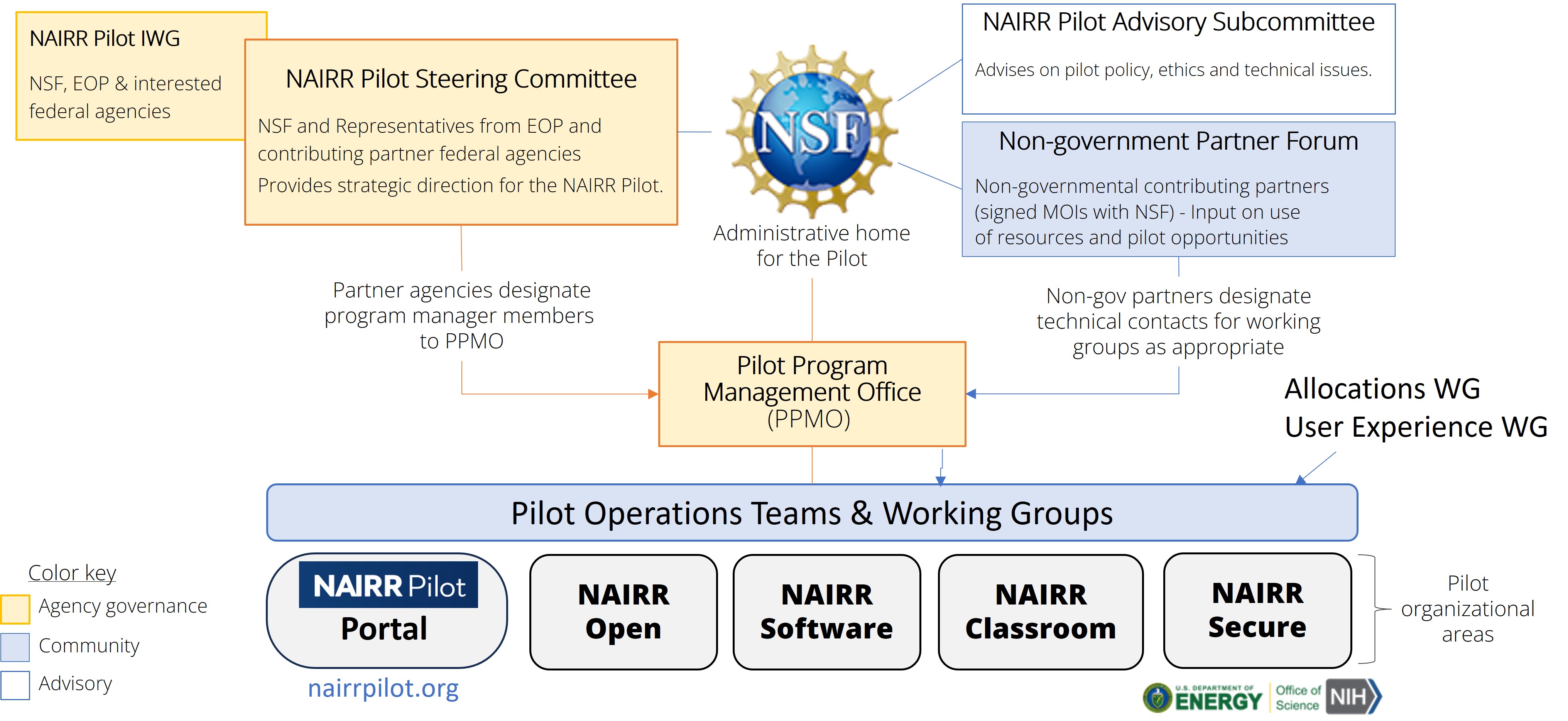NAIRR Pilot Management and Governance
Following the recommendations of the NAIRR Task Force, the NAIRR Pilot has implemented the following management and governance structure.

NAIRR Pilot Steering Committee
The Steering Committee is composed of representatives from each of the federal agencies who are contributing resources to the NAIRR Pilot. The Steering Committee designates members to serve on the Pilot Program Management Office (PPMO), advises the PPMO, and reviews its activities.
Pilot Program Management Office (PPMO)
The PPMO is composed of federal agency representatives who are tasked with the responsibility of implementing the NAIRR Pilot as described in Executive Order 14110, including identifying and recruiting partners and partner resources for the NAIRR Pilot, identifying and funding working groups for NAIRR Pilot operations, and articulating policies governing partner participation, research allocations, and awards.
Operations and Working Groups
NAIRR Pilot operations are handled by the working groups listed below. Pilot working groups are led by teams funded through either grants or cooperative agreements to implement NAIRR capabilities.
Allocations Working Group
The Allocations Working Group is responsible for managing the allocation of resources to the NAIRR user community. This working group provides online services for managing allocation requests and awards, implements allocation review procedures, and coordinates resource usage reporting and user allocation management.
Portal Working Group
The Portal Working Group implements the NAIRR Pilot Portal to provide information on the NAIRR Pilot and integrates services (such as allocation requests and help desk features) provided by other working groups into a unified user environment.
User Experience Working Group
The User Experience Working Group provides services to support allocated projects, including coordinating resource provider documentation, onboarding and wayfinding for new users, supporting a NAIRR Pilot user group, providing concierge services, and addressing other support gaps not covered by the individual resource providers.